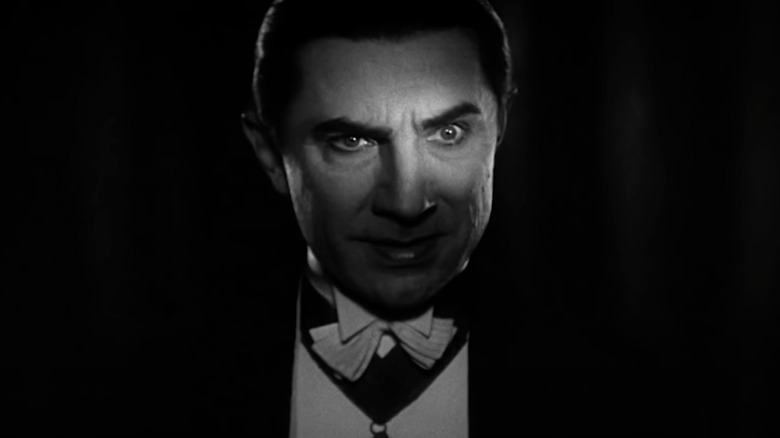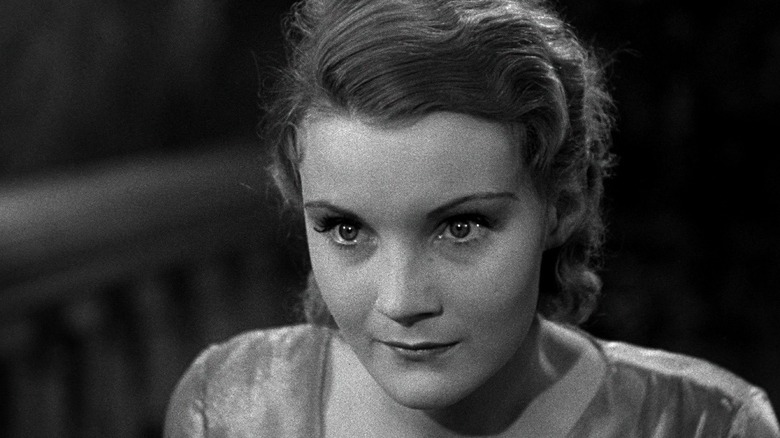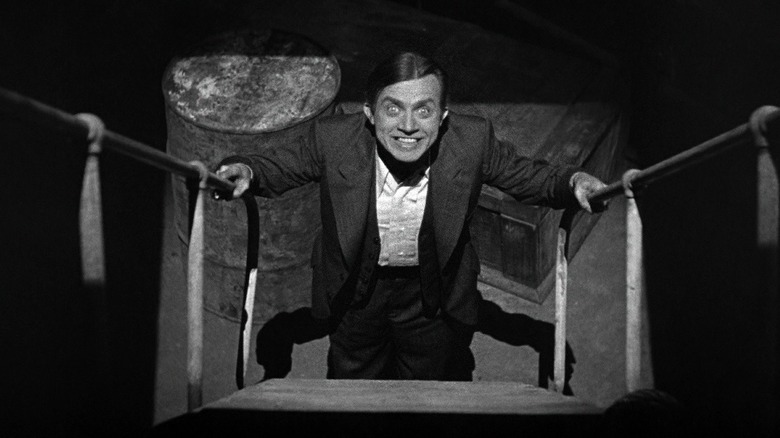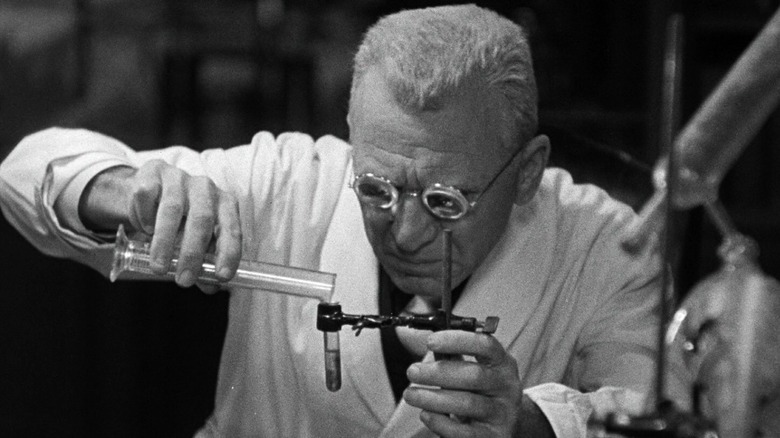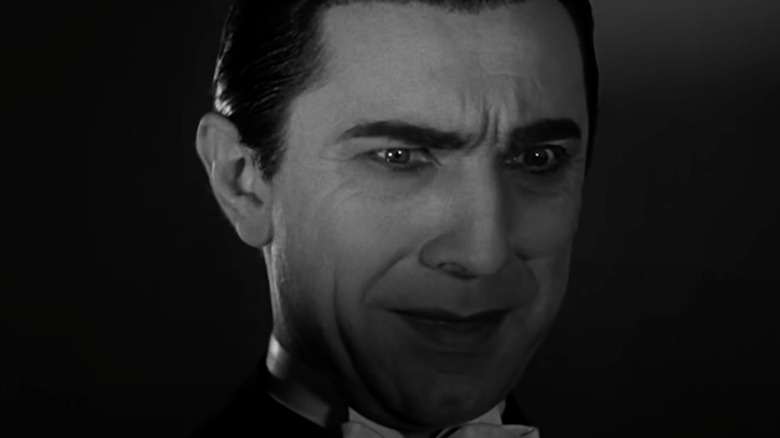Year Of The Vampire: All Bloodsuckers Bow Before Bela Lugosi's Dracula
(Welcome to Year of the Vampire, a series examining the greatest, strangest, and sometimes overlooked vampire movies of all time in honor of "Nosferatu," which turns 100 this year.)
Five minutes into "Dracula," the first Universal Classic Monsters movie and first sound film adaptation of Bram Stoker's timeless novel, the camera pushes in on a coffin as a spidery hand comes reaching out. Another hand with long nails, one of Dracula's brides, creeps out of another coffin, and there's even a little insect in a bug-sized coffin. And now it's happened: the vampires are awake, in "Dracula" and in Hollywood.
Rats chitter and wolves howl, and we're told that it's "Walpurgis Night," which is associated with witchcraft and which marks the transition from April to May. Soon, Bela Lugosi is onscreen with his cape wrapped around him, eyes forever fixed in light and shadow and the horror movie Hall of Fame.
"When the dream came, it seemed the whole room was filled with mist. It was so thick, I could just see the lamp by the bed, a tiny spark in the fog. And then I saw two red eyes staring at me, and a white livid face came down out of the mist. It came closer. And closer. I felt its breath on my face. And then its lips."
This is how Mina Seward (Helen Chandler) describes the Count's first visit to her bedroom in "Dracula." Her fiancée sits and listens attentively as she delivers this soliloquy with unblinking eyes. It's an evocative description whereby the viewer can truly see the scene in their mind's eye and feel the seduction and horror of it even though we're just listening to a woman in a well-lit room describe an offscreen terror. Though Mina is in London, she might just as well be describing the experience of the American moviegoer in 1931, as the most famous vampire of them all encroached on their silver-screen dreams.
What it brought to the genre
"Dracula" brought the genre to itself, or at least brought it stateside to the Hollywood studio system. While he may not be the father of all film vampires (that would be Count Orlok, who died in the morning sun in Germany), Lugosi's version of Dracula popularized them like never before. A common rule of vampire movies, including this one, is that killing the head vamp will either free the people they've turned or wipe out every other bloodsucker. If this "Dracula" didn't exist, the same mass extinction of vampires might occur within film history.
Browning's film and Lugosi's performance codified the image of Count Dracula in a black cape, with slicked-back hair and a penchant for heavy pauses and vampire vords, stemming from the actor's real-life Hungarian accent. This image has long since passed into the realm of caricature, but only because Lugosi was there at the start and left such an indelible bite mark with it.
Even Mina mimics and mocks the Count's accent right alongside his first appearance, quoting him and saying, "It reminds me of the broken battlements of my own castle in Transylvania." Yet this only lays bare the xenophobic side of the Dracula legend, which is predicated on the idea of a foreigner who hoards gold and moves along the wall like a lizard suddenly making his way to civilized London.
Back in Transylvania, the Count's castle is indeed crumbling and there are creatures and cobwebs everywhere. Even armadillos come crawling out of the woodwork. Yet in contrast to Orlok's animalistic qualities, Count Dracula himself carries a suave, aristocratic bearing, in keeping with the figure of Lord Ruthven from the first published vampire story, John William Polidori's 1819 tale, "The Vampyre."
As Mina giggles about Dracula's accent, her friend Lucy Weston (Francis Dade) tells her, "Laugh all you like. I think he's fascinating." Filmgoers felt the same way. They soaked up Lugosi's Dracula and he became a part of the culture at large, not just in vampire movies but in Halloween costumes, breakfast cereal (Count Chocula), and even "Sesame Street" Muppets (Count von Count).
The blood is the life
"Dracula" also brought Universal back from the brink of bankruptcy, paving the way for all the classic monster films that would follow, beginning with "Frankenstein" later that same year. It's not as faithful to the book as "Bram Stoker's Dracula," but technically, it's an adaptation of an adaptation, anyway. Written by Garrett Fort, "Dracula" sticks mostly to a few static locations throughout its 74-minute runtime, and this betrays the film's origins as a stage play, penned by Hamilton Deane and John L. Balderston, based on Stoker's book.
"Dracula" is an epistolary novel, the literary equivalent of a found-footage film, where the story instead takes on the pretense of letters, diary entries, the log of a doomed ship, and other pseudo-realistic documents, all cobbled together in service of the same narrative. Browning's film adaptation has no soundtrack, and there's a moment in it where the viewer becomes a newspaper reader in the old Stoker tradition. Our eyes are left to peruse isolated parts of an article onscreen as an ambient hiss carries on in the background.
The movie also has shifting perspectives, similar to the book. Van Helsing (Edward Van Sloan) doesn't show up until almost the halfway mark, though he would be the only character to reappear in the 1936 sequel, "Dracula's Daughter." The role of Jonathan (credited as "John") Harker, played by David Manners, is reduced here, such that the real star of "Dracula," apart from Lugosi and Van Sloan, is, in some ways, Dwight Frye.
Something no other vampire has ever been able to match is the hypnotic power of Lugosi's eyes. Yet Frye's eyes are also quite creepy when he's bugging them out and baring his teeth in his guise as Dracula's maniacal acolyte, Renfield, who finally has his own movie coming next year. Frye would go on to play the titular mad scientist's hunchbacked assistant in "Frankenstein." Here, as Renfield, he takes on Harker's usual journey to Dracula's castle, before the Count lures him in with lines like, "The spider spinning the web for his unwary fly. The blood is the life, Mr. Renfield."
A wreath of wolfsbane
In the span of one scene transition, Renfield faints and is reborn aboard a schooner to England as Dracula's deranged, simpering lackey, who never fails to show his fiendish grin (or make maids faint and crawl toward them on all fours). He becomes "obsessed with the idea that he must devour living things in order to sustain his own life." This could almost be a description of Film Twitter and the movie blogosphere. I have a theory that we're all a bit Renfield: members of a new breed of vampires who feed on film energy.
In "Dracula," Van Helsing says, "The strength of the vampire is that people will not believe in him." Though the Count is able to infiltrate high society and roam London's foggy streets in a top hat like Jack the Ripper, his fury at potentially being exposed by a mirror contorts his face in such a way that the other assembled men liken him to a "wild animal." Browning stages the preceding mirror reveal effectively, cutting back and forth between Dracula talking in the room and Van Helsing observing his lack of a reflection.
There are other moments that make it clear "Dracula" is playing by its own set of rules, like when Van Helsing provides a wreath of wolfsbane to ward off vampires instead of garlic. The film's ending might, at first, seem somewhat nonsensical. Why would Dracula suddenly decide to crawl into his coffin for a nap, when he's just seen Van Helsing and Harker advancing on him a minute earlier? He literally lies down and dies. However, Mina soon explains, "The daylight stopped him."
"Nosferatu" had established the trope that sunlight could kill vampires, but in "Dracula's Daughter," Van Helsing maintains that driving a stake through a vampire's heart is the only way it can be destroyed. This is further supported by a line in "Dracula" where he says, "Our only chance to save Miss Mina's life is to find the hiding place of Dracula's living corpse and to drive a stake through his heart." So it would seem sunlight just acts a powerful soporific on Lugosi's Dracula, necessitating sleep in his coffin above all other concerns. Maybe he's earned his rest!
Look into his eyes
"Dracula" lives best in its quiet moments, but it also holds moments that might seem cheesy now, such as when Renfield looks to the front of the Count's coach and sees an obviously fake bat flying over the horses, as if driving them. The comic relief of the orderly Martin (not that Martin), who sports his own exaggerated Cockney accent, can perhaps be seen as a precursor to the popularization of horror comedies. That genre would provide Lugosi with his only opportunity to officially reprise his role as Dracula in "Abbott and Costello Meet Frankenstein" in 1942.
Lugosi's life became the subject of a graphic novel last year, and Karina Longworth devoted a season of her podcast, You Must Remember This, to how his career paralleled that of his fellow horror legend, Boris Karloff. After playing the monster in "Frankenstein" alongside Frye, Karloff went on to star in "The Mummy" and co-found the Screen Actors Guild, among other things. Lugosi, who was pushing 40 when "Dracula" came out, struggled with typecasting and drug dependency, eventually falling in with cult filmmaker Ed Wood. (Martin Landau later won an Oscar for playing Lugosi in Tim Burton's biopic of Wood.)
The archetypal Dracula would become patterned after Lugosi's portrayal, but this was a double-edged sword. If there's ever any doubt that Dracula is Other, just take a look at all the roles Lugosi was stuck in after playing the Count. In the same year, 1934, the film industry put him in yellowface in "The Mysterious Mr. Wong" and exoticized him as an Indian mystic in "The Return of Chandu." He played Hindus and Arabs, despite the fact that he was Hungarian, and though he saved Universal, he never enjoyed the same level of respect (or perhaps self-respect) that Karloff did as an actor.
Except within the vampire genre. "Dracula" may not be the best vampire film or even the best Dracula film, but Bela Lugosi's Dracula is the greatest of all movie vampires. If you don't agree with that, just look into his eyes. He will hypnotize you and make you a member of his coven, which holds virtually every vampire movie ever made.
